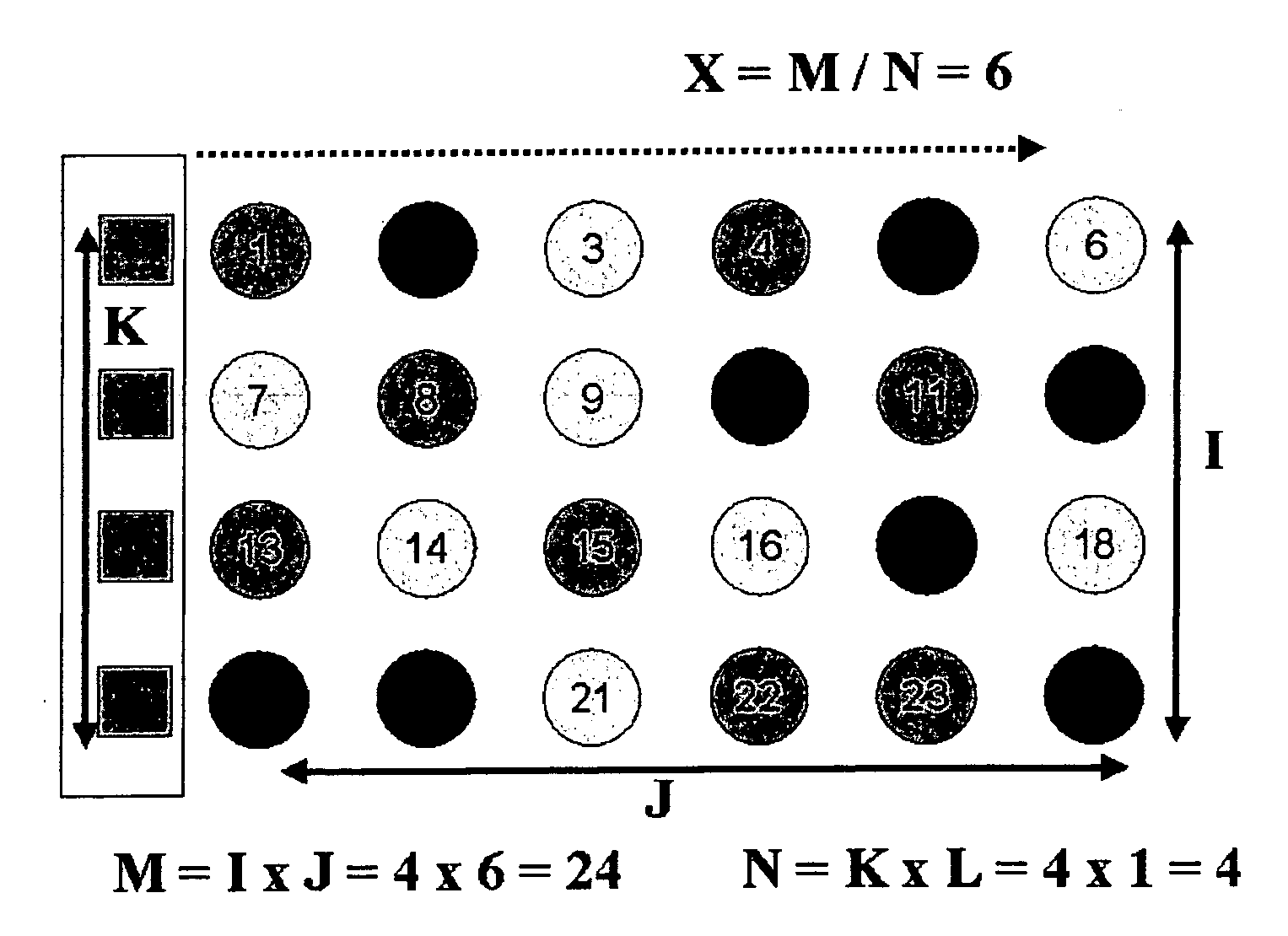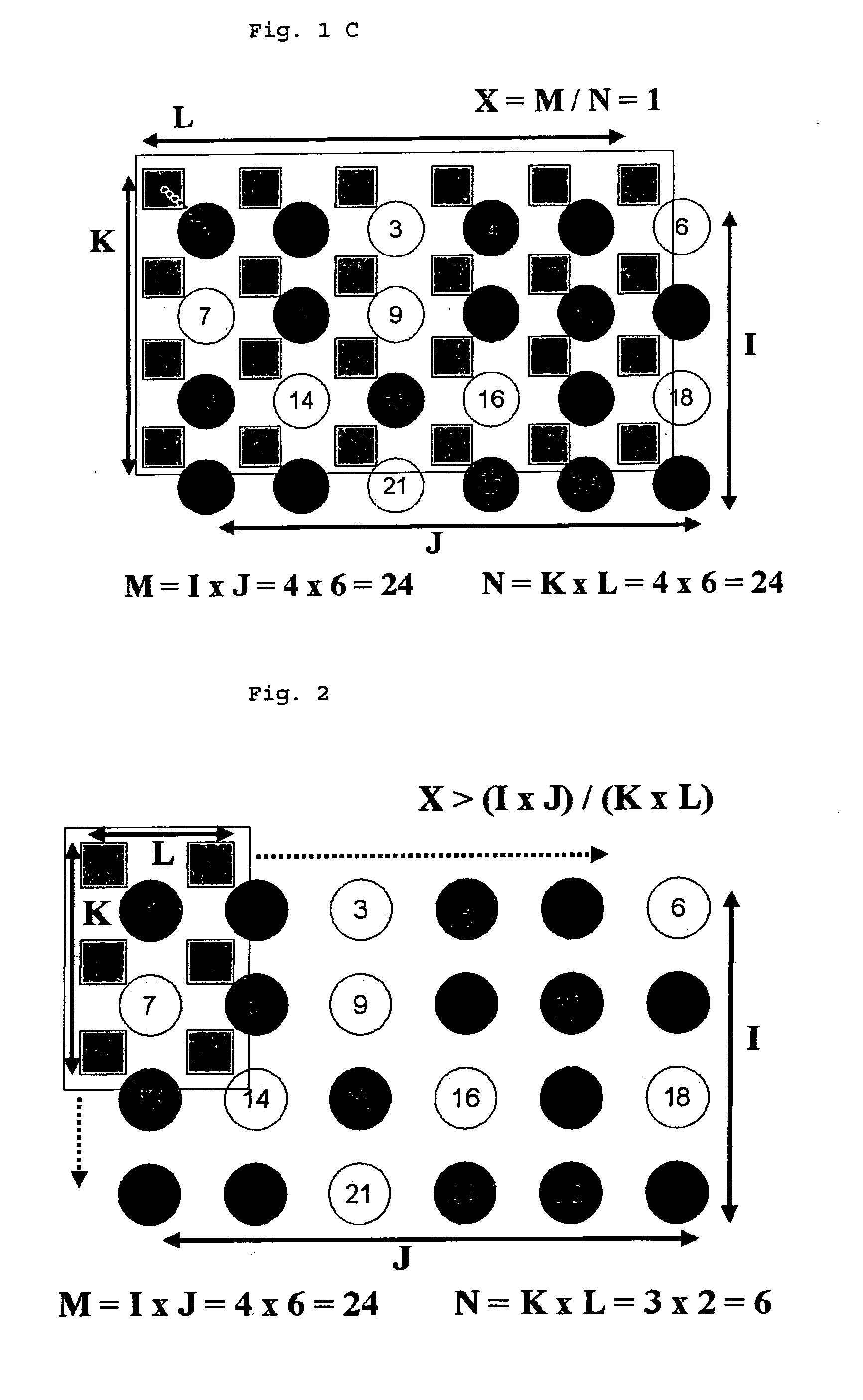Method to improve the quality of dispersion formulations
a technology of dispersion formulation and quality improvement, which is applied in the field of high-speed material design workflow, can solve the problems of pigment dispersions, color discoloration of inks, further problems related with heterogeneous systems, etc., and achieve the effects of accelerating research, reducing production costs, and reducing production costs
- Summary
- Abstract
- Description
- Claims
- Application Information
AI Technical Summary
Benefits of technology
Problems solved by technology
Method used
Image
Examples
examples
[0134] While the present invention will hereinafter be described in connection with preferred embodiments thereof, it will be understood that it is not intended to limit the invention to those embodiments.
[0135] While ultrasonic or ultraturrax techniques were performed, all dispersions were kept at a temperature of 15° C., unless otherwise specified in the description of the examples hereinafter.
[0136] In a first experiment ink-jet ink dispersions were prepared by weighing 600 mg of pigment powder on an Autodose Powdernium® MTM solid handler into small glass test tubes having an outer diameter of 13 mm and an height of 75 mm.
[0137] The rack with tubes was then moved to an Anachem SK233 liquid handler to add an amount as tabulated in Table 1 of a stock solution of a polymeric dispersant and distilled water. Dosing on the SK233 was done in volumetric mode.
[0138] After magnetic stirring on a 60-position Variomag stirrer for 30 minutes, the test tubes were further used in a next dis...
examples 1-6
1-5; INVentive EXamples 1-6:
[0139] In a first experiment said set of inks was measured without dispersion improvement treatment and after an improvement treatment on a Tomtec Autogizer equiped with individual Sonics® probes of maximum 130 Watt and a 6 mm diameter probe tip. The device was operated in a fast serial way, with as main variation the duration of the ultrasonic treatment. After the dispersion improvement treatment the resulting dispersion was diluted by a factor of about 5000 (depending on the extinction coefficient of the colorant). This was done on the SK233 liquid handler in 2 or 3 separate steps in order to obtain a high dilution accuracy (e.g. 700 μl of the MK8490 in 34.3 ml distilled water, and then again 400 μl of this diluted dispersion into 34.6 ml of distilled water). An absorption spectrum of this diluted dispersion was recorded on a Shimadzu 3401PC UV-VIS NIR spectrophotometer and the absorption intensity was measured at 615 nm and 830 nm. The ratio of these a...
examples 7-9
[0141] The same ink as in example 1 was used, but instead of an ultrasonic treatment on the Tomtec Autogizer, the robot was equiped with high speed homogenizers (Ultraturrax, high speed cutters) and the inks of the examples were treated as described in Table 3. After the dispersion improvement treatment the dispersion quality factors were determined as described for example 1.
TABLE 3ExampleInkDispersion TreatmentDQFCOMP 1I_1None3.8INV EX 7I_1 9 min. UT at 60% on TOMTEC11INV EX 8I_150 min. UT at 30% on TOMTEC10INV EX 9I_130 min. UT at 60% on TOMTEC12
[0142] It is clear that the dispersion improvement step, based upon a rapid parallel / serial high speed cutting principle yields better dispersions than without a dispersion improvement step, while small amounts of chemicals have been used and an efficient workflow can be followed.
PUM
| Property | Measurement | Unit |
|---|---|---|
| temperature | aaaaa | aaaaa |
| particle size diameter | aaaaa | aaaaa |
| volume | aaaaa | aaaaa |
Abstract
Description
Claims
Application Information
 Login to View More
Login to View More - R&D
- Intellectual Property
- Life Sciences
- Materials
- Tech Scout
- Unparalleled Data Quality
- Higher Quality Content
- 60% Fewer Hallucinations
Browse by: Latest US Patents, China's latest patents, Technical Efficacy Thesaurus, Application Domain, Technology Topic, Popular Technical Reports.
© 2025 PatSnap. All rights reserved.Legal|Privacy policy|Modern Slavery Act Transparency Statement|Sitemap|About US| Contact US: help@patsnap.com



